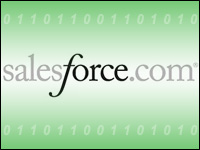
Sales force automation — nimble, lightweight and usually mobile — seems to have little in common with its staid parent, enterprise resource planning. Until you consider this: After years of widespread adoption, SFA has also become mature — but in its own way.
For starters, it is now almost always consumed as Software as a Service, Jereme LeBlanc, principal of TM Capital, told CRM Buyer.
Another key characteristic: SFA vendors have realized that to stay competitive, they need to offer industry-specific verticals.
“They long ago realized that selling SFA automation tools to a bank is very different than to say, a healthcare provider,” noted LeBlanc.
Yet the space is not remaining static. There have been changes over recent months — primarily in client demand — that are likely to usher in new pricing models and a more conservative approach to Web 2.0.
New SFA Price Points
On-demand SFA applications became very popular several years ago, noted Gartner’s Rob Desisto. Now, the first and second wave of early adopters are finding that their multiyear contracts are coming up for renewal.
Some are signing again on the dotted line. Others — cognizant of the recent economic pain — are asking for concessions.
“Companies are so much more conservative now. When they first signed onto the SaaS concept, many thought it would lower costs — but they have come to realize that, like with cable, the bill never goes down,” DeSisto told CRM Buyer.
Customers are renegotiating price points in a couple of different ways, with varying degrees of success. Some are asking for discounts — much like companies did with the ERP vendors 10 years, Desisto pointed out.
The problem with that approach is that the size of the discount matters little when starting price points vary so significantly. On average, companies with 1,000 users have paid anywhere from US$45 to $110 per user per month, Desisto said. In recent months, those price points have settled in around $45 to $65 per user per month.
Companies are haggling with their vendors in other ways, as well. Some will ask for a lower price if they have a certain period left to go on their contract. In exchange, they will extend the term even further.
Other companies are slowly ratcheting up the number of users that will migrate to the system in coming years — as opposed to buying seats for all the employees in one shot. A lot of firms did that in the first wave of implementations, which led to the phenomena of “shelfware as a service” Desisto said.
When companies try to negotiate an opt-out clause, the vendors start to push back, he noted. For example, if a company wanted to make the migration of 1,000 employees onto an application contingent upon reaching a certain revenue level within the coming year, a vendor would not likely go along.
“Vendors can’t book deferred revenue in that scenario,” Desisto explained.
The industry is also beginning to see more demand for role-based pricing, he said, with casual users getting a lower price point.
Growing Demand
For all the haggling over pricing, companies are still feel very positive about the applications on the market, he said — indeed, demand among new customers is higher than ever.
“In-bound inquiries about acquiring SFA are up year over year somewhere in the neighborhood 30 percent,” noted Desisto.
With the glimmers of an economic recovery, demand is on the rise for any application that will allow a company to add to its top line — and that will help it do more for less, said Naylor Gray, director of global marketing for Frost & Sullivan,.
Thus, he also reports a growth spurt for sales force automation demand — but indirectly, through the fiercer demand for marketing automation.
“Marketing automation runs best in an SFA environment, though, so we are seeing demand for both,” he said.
More to the point, Gray said he is also hearing more grumbling about why the CRM industry cannot once and for all integrate the two. Marketing automation’s siloed position has long been an irritant to many; now, as companies husband their IT dollars ever more carefully, few are willing to accept such limitations.
As a result, “what we are seeing is the rise of more apps written for SFA that are also trying to approximate some of the features for marketing automation,” noted Gray.
Shadetree Technologies, for instance, recently released an app that tries to marry the both of best worlds, he said.
“Say you are in a selling situation and you know that the person you are talking to is a decision maker,” he said. “That will change the points you make. The app will bring up a different script, depending on the person and his or her role.”
SFA apps are also integrating more into service information as well — which is also necessary for the sale, Rebecca Wetteman, principal of Nucleus Research, told CRM Buyer. “The sales force needs to know a lot more about its customers — especially for repeat business.”
That was one of the driving factors behind Salesforce.com’s recent Service in the Cloud enhancements, she said.
Whither Facebook?
At the same time, SFA apps are starting to become less enamored of social networking applications — particularly Facebook, Wetteman continued.
“Integration with LinkedIn is still of interest to vendors because it is largely professional contacts, but more are recognizing that a sales person may not necessarily want his boss or clients to know how good a time he had at the beach,” she pointed out.
“I can’t think of many SFA applications that have made announcements around Facebook in the last few months,” she said.
She expects the same trend to extend to Twitter.
For that reason, Wetteman senses a hesitancy among SFA vendors to embrace Twitter.
“Companies do not want to implement productivity-sucking applcations that don’t have a clear purpose anymore — and vendors are starting to recognize that,” she said.























































